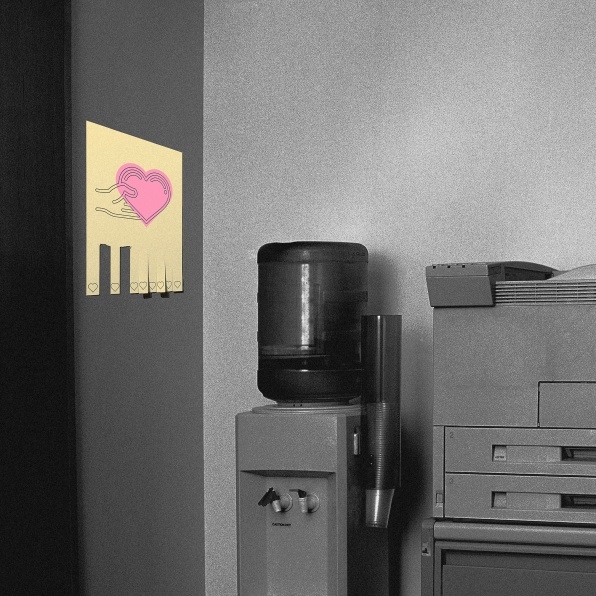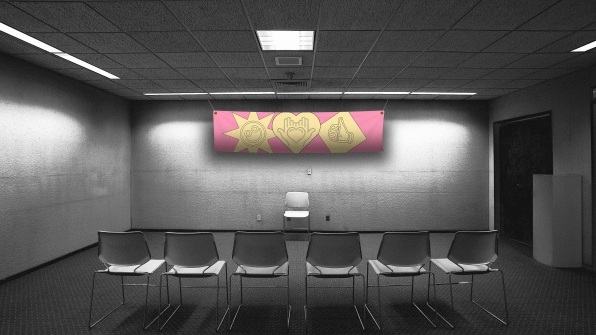A global pandemic. An uptick in police brutality and racially targeted hate crimes. A country so polarized by fear, hate, and misinformation that insurrectionists stormed our own Capitol only a year ago.
Work still starts on time every day, but business is not as usual. And it’s time to stop pretending that it is.
Nowhere is this more clear than in a new survey conducted by the professional growth community HmntyCntrd and the design research platform Dscout. Over discussions with dozens of design professionals in the U.S., the teams deconstructed how many corporations are responding to the trauma their employees are experiencing. They found that companies, even well-meaning ones, tend to respond with the same selection of superficial strategies. Rather than addressing the pain people are enduring, they’re meant to keep the company moving forward as efficiently as possible. You can read the full report for free here.
When referencing “trauma,” the researchers are using its literal definition: “any event or experience that leads to distress, impairment, or emotional, physical, spiritual, or psychological harm.” That trauma can be something you bring with you to work, something you experience at work, or something you carried to work that work exacerbates.
“At the heart of it, a lot of capitalistic systems are banking on you not acknowledging your full humanity,” says Vivianne Castillo, founder of HmntyCntrd, who worked on the survey alongside Alba Villamil, partner at HmntyCntrd, and Karen Eisenhauer, original research lead at Dscout. “They’re hoping you become unattached to yourself and [your] needs so you prioritize their business needs.”
Trauma is not, by any means, a problem faced only by the professional design community. The report applies to anyone showing up to work. But designers are challenged to think of others as part of their job, which Castillo argues naturally creates an extra emotional burden in their field.
“A lot of [designers] get into the field because of ideas around empathy, inclusion, and caring about people. They bring a lot of that care and themselves into that work. It’s not just work, it’s personal,” Castillo says. “They are put into these design organizations that aren’t excused from the stain of capitalism. And they experience the lack of human centeredness in their work . . . that conflicts with their values—[which are] what brought them to this work.”
The new report highlights four “playbooks” that corporations are using to respond to the moment. It points out that a common theme in these playbooks is “resilience.” Especially in a capitalistic context, this relatively positive word can actually be dismissive of pain, like a coach who expects players to get back on the field despite injury. Case in point: Productivity was up 5% for many companies during COVID-9, despite 2021 being one of the worst years in recent memory for many of us.
The DIY-er
The first playbook is “The DIY-er.” It involves management sending out self-help materials, like mindfulness newsletters and stipends for gym memberships or meditation apps. Free-floating vacation days can be part of this package, too. At first glance, it’s fantastic. However, “the problem with the DIY Playbook is that it allows leaders to implicitly shift the burden of care from organizations (a major source of trauma) to the individual employees already depleted by that trauma,” the report explains. The workplace is offering you a Band-Aid when you need a surgeon.

The Empathy Empathizer
The second playbook is “The Empathy Empathizer.” This strategy connects employees with their managers in one-on-one office hours. Employees with similar backgrounds are encouraged to join groups in the name of inclusivity. Companies take surveys and collect lots of data.
What’s wrong with safe spaces and feedback loops? The report acknowledges that they’re important developments inside a company. However, the shortcoming is twofold: Middle management might listen to your needs, but they don’t have the power of executive leadership, and this approach requires ongoing support from the top. “While direct managers and other support roles may come from a place of care, their inability to advocate for employees can manifest frustrating and traumatizing experiences of betrayal,” the report explains.
Furthermore, when employees run internal support groups, that task isn’t always a gift. “Volunteer groups re-traumatize people behind them,” Castillo says.
The Minimizer
The third playbook is “The Minimizer.” It’s more or less the business-as-usual playbook, which rewards output and, just as crucially, optimism. Upper management stalls on sharing any bad news while encouraging channels for good news.
Failings of this approach may seem more obvious at first glance: The workloads are exhausting, especially with extra stress piled on top. But as the report explains, the more “insidious” play is that it makes employees frame themselves as workers rather than as people. We put our humanity on hold to compete while the world burns down around us in a “this is fine” meme.

The Performer
The last playbook is “The Performer.” This includes companies making big announcements and launching large-scale initiatives around things like inclusion committees. Outspoken employees, deemed stars, are handed the reins.
The catch is that it’s often a onetime initiative. And employees who take charge are often handed a volunteer workload while being sucked into inevitable PR and optics efforts so that the company appears like a wonderful, healthy place to work. When a company has a stellar reputation, it can be even harder for employees experiencing trauma to advocate for change.
“Let’s roll up an initiative, let’s spin up another volunteer program,” Castillo says. “There’s no thought around, What does it mean to be holistically human-centered?”
So what’s the solution? Even the concept of a “solution” could be seen as part of the problem. The way I read the survey’s critique is that corporations need a new way of thinking that rebalances ROI away from how fast employees produce to how healthy employees feel. That becomes a very challenging proposal, one that questions the tenets of running a business, and even capitalism itself.
“It’s less about throwing a solution or initiative onto something than doing the work to understand what needs to be healed,” Castillo says. “It’s a mindset shift. There’s a lot of work that goes into doing this work well. What if we didn’t . . . gaslight people into doing more and being better?”
Ultimately, it seems to require that leaders place their people ahead of their businesses, and acknowledge uncomfortable truths instead of ignoring them. And we all must recognize, as Villamil frames it, that “critique is a signal of hope.”
(39)